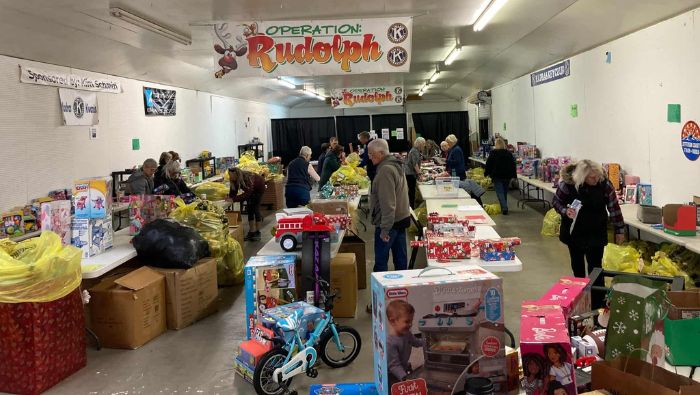
Grants help make club projects special
Three clubs received grants for “classic” Kiwanis projects — with a twist.
By Erin Chandler
Some service projects and fundraisers have become staples of Kiwanis clubs around the world. Three of the 18 projects that received Kiwanis Children’s Fund club grants in August put a club’s individual spin on one of these “Kiwanis classics.” Read more below — and think about how your club can make one of your traditional projects an event all your own.
Healthy Kids, Healthy Adults
Kiwanis Club of Jacksonville, Texas, U.S.
Kiwanis clubs have a long history of building playgrounds for their communities. The Kiwanis Club of Jacksonville is putting its own twist on this classic project by building a playground-adjacent fitness station, allowing teens and adults to exercise while their kids play. This addition to the recently-renovated playground benefits the whole family — when kids can watch their older siblings, parents and guardians “play” on the knee-lift dip station, decline sit-up bench, step-up platforms, pull-up bars and more, they learn the value of maintaining a healthy lifestyle as they grow. A club grant from the Kiwanis Children’s Fund will go toward the purchase of the equipment, surrounding benches and sidewalks, and anchoring and surfacing materials. Club members will work with the city’s Parks and Recreation Department to install and maintain the equipment.
Charlevoix Elementary School Social Emotional Learning Library
Kiwanis Club of Charlevoix, Michigan, U.S.
The Kiwanis Club of Charlevoix is one of many literacy-focused clubs that have helped supply local schools with books for their libraries and for kids to take home. But as Charlevoix Elementary School implements its new social and emotional learning curriculum, the club discovered its library could benefit from an upgrade. The addition of a Social Emotional Learning Library at the school will help improve kids’ academic performance and overall wellbeing by addressing issues such as anxiety, depression and difficulties with social-emotional development. Thanks to a Kiwanis Children’s Fund club grant, the library will be stocked with videos; software; weighted vests and blankets; sensory tools like stress balls, puzzles and coloring pages; calming lighting; and, of course, books addressing social and emotional issues, all based on instructor wish-lists and the recommendations of a committee made up of teachers, counselors, librarians, authors and more. Everything will be available for classrooms and for students and families to check out.
Operation Rudolph 2025
Kiwanis Club of Madras, Oregon, U.S.
The Kiwanis Club of Madras is one of many Kiwanis clubs all over the world that spring into action during the holiday season, providing gifts to families that might not be able to afford them. Kiwanis club members have been running Operation Rudolph for over 30 years, purchasing and collecting donations of toys, games, crafts, clothes, hygiene products and more and distributing them through the Department of Human Services, the Latino Community Association, CASA and Mountain Star Relief Nursery. This year, a Kiwanis Children’s Fund club grant will help purchase items that are not typically donated, including warm winterwear, additional hygiene products and items for teens. But the club also turns Operation Rudolph into an opportunity for youth leadership development: Over 200 students take part in the project. Madras High School Key Club begins making gift kits in September, and members lead and mentor younger student volunteers through the process of wrapping hundreds of gifts. They even give suggestions for the setup and planning process.
How you can help
The Kiwanis Children’s Fund makes grants that improve the lives of children around the world by identifying projects that create a continuum of impact in a child’s life — one that spans their entire childhood and sets them up for a bright future. Through The Possibility Project, the Children’s Fund ensures that its grantmaking has the greatest possible impact, supporting projects that target the Kiwanis causes — health and nutrition, education and literacy, and youth leadership development — whether through a Kiwanis club’s local service project or a club’s partner.
Learn how your club can apply for a grant to help kids in your community. If you are interested in extending your and your club’s impact beyond your community, make a gift in support of The Possibilty Project.
Find out about more projects that received club grants next week!


